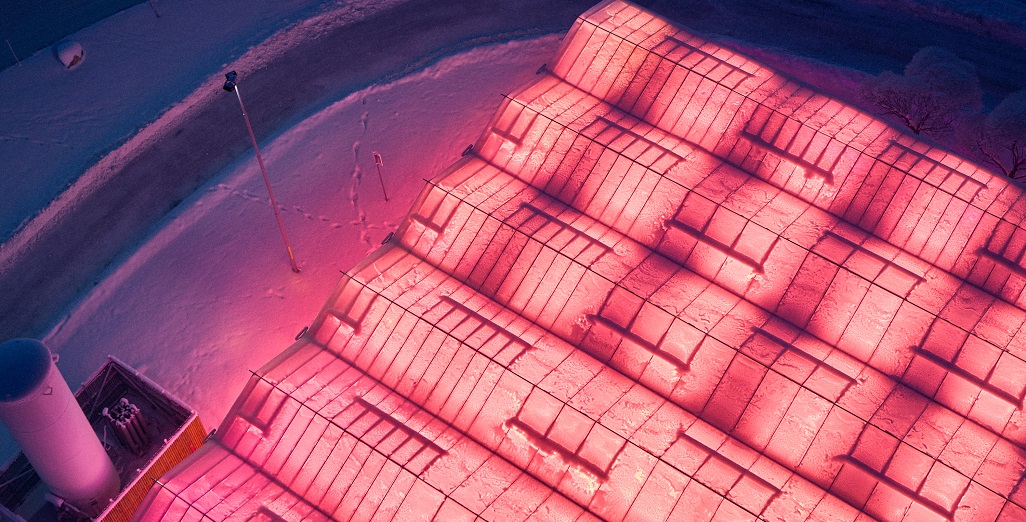Sign up here to subscribe to the Grower2grower Ezine. Every two weeks you will receive new articles, specific to the protected cropping industry, informing you of industry news and events straight to your inbox.
Aug 2018
Year-Round Strawberry Production

Growing in High Tech NZ Greenhouse Conditions
Article written by Mike Nichols
Traditionally in New Zealand strawberries are planted in the autumn, and flower in the spring, producing a crop of ripe strawberries in the early summer. For this reason the growers who specialise in strawberry runner production have developed an effective system which ensures a good supply of high health strawberry runners to the industry in the May/June period.,
In our early studies with greenhouse strawberry production I used runners (young plants) provided by the strawberry runner producers in Katikati.
There are essentially two main types of strawberries, the short day type, such as the variety Camerosa, which requires a period of short days (less than 12 hours of daylight per day) and may even require a short period of cooler temperatures in order to initiate flowers, and the day neutral types, such as Monterey, which initiate flowers irrespective of daylength, but may require a period cooler temperatures for good flower production.
Camerosa is still the main variety grown in the field in New Zealand, because of it’s large fruit size, and good production in the pre-Christmas period.
Strawberry production under greenhouse conditions has many advantages over field cropping, including a marked reduction in fruit rots (due to no rain), better quality, no birds etc, but, of course at a capital cost. In our initial trial we soon discovered that the long term productivity of the day neutral types far exceeded the short day varieties, although the short day varieties produced a very heavy daily harvest, but over a much shorter time.
The problem with the day neutral types is that fruit size tends to fall over time, and that the cost of harvesting strawberries is dependent on the size of the berries, as it is much, much cheaper to harvest large fruit (per kg) than small fruit. The second problem is that as the runners only become available in May/June the greenhouse crop tends to mature over a very similar period (though of course slightly earlier) than the conventional outdoor crop.
Our approach was to develop a system of producing planting material (runners) year round, and to see what the performance of different varieties was with planting dates every month of the year.
The system of runner production we used was the tip runner system, in which the mother plants are grown (hydroponically) well above the ground, and the runners when they are produced are cut from the mother plant, and rooted in a growing medium under mist. The resulting plants can then be grown on in larger containers (we use rock wool blocks), or planted out immediately.
For the past 2 years we have been able to harvest ripe strawberries every week of the year from a greenhouse in Palmerston North, where winter light conditions are anything but ideal.
How long you can crop the plants for is a good question, as the very best fruit is produced by the youngest plants. One approach may be to cut the plants back after say 3 months of cropping. Another may be simply to replant at regular intervals—it is all an unknown area of endeavour.
One other consideration is the economics of the whole operation, as “out of season” production strawberries can be imported relatively cheaply from Australia and California, but these come in with a biosecurity risk from fruit fly.
Note: This work was undertaken with my colleague Damian Duggan-Jones who is now working for T&G International on their berryfruit project at Kerikeri.
I appreciate your comments. Please feel free to comment below or on the grower2grower Facebook page:
https://www.facebook.com/StefanGrower2grower/
Article written and supplied by Dr M A Nichols.
.jpg)
CLASSIFIED
Subscribe to our E-Zine
More
From This Category

High-tech spy gear to uncover the secrets of Bumble bees in Tasmania

Cherry Production in New Zealand – Mike Nichols

Signify helps Agtira to bring locally grown cucumber to Swedish market
Dimmable Philips LED top-lighting fixtures support maximum efficiency and better use of energy

Plant & Food Research welcomes changes to gene technology regulations


























